Palmetto Bluff Real Estate Company Sales Office
Office Hours
Monday-Friday 9am - 5pm
Saturday 9am - 4pm
Sunday 12 - 4pm
Saturday 9am - 4pm
Sunday 12 - 4pm
On May 13, 1922, a man climbed to the top of the Members’ Clubhouse at the Pimlico Race Course in Baltimore and painted the jockey on the weather vane in the green and gold of Richard T. Wilson, Jr.’s racing silks. For an entire year, until the next running of the Preakness Stakes when a new winner would be declared, the jockey on the weather vane would sport the 56-year-old Wilson’s colors.
Born in 1866, the youngest son of a self-made millionaire, Richard T. Wilson, Jr. had the finances, and therefore the freedom, to pursue his love of thoroughbred horse racing. He was also smart enough to know that success on the turf required a top-notch trainer in the stable. In the 1890s, Wilson hired Thomas J. Healey, then a young thoroughbred trainer who was just beginning to enjoy some recognition for his skill, to oversee the conditioning of Wilson’s horses. Under Healey’s care, Wilson’s horses excelled consistently, running in top races around the country and bringing home some of the sport’s largest purses. In 1916, Wilson’s horse Campfire was the top money-winner in American racing. (Healey would work for Wilson for more than 30 years and eventually be inducted into the Racing Hall of Fame for his achievements.)
Having his racehorses in Healey’s charge meant that Wilson didn’t have to worry about his racing string in the off-season, and he could relax. In other words, it meant that he and his family could spend the winter at their Southern home, the coastal South Carolina property that Wilson had purchased in 1902 and named “Palmetto Bluff.” With acres of gardens and a magnificent mansion overlooking the May River, the idyllic estate was a beloved retreat for Wilson. Here, he enjoyed the saddle horses that he kept for riding and hunting, not for the track, and he could indulge in the lifestyle of a country gentleman. Yet, as much as Wilson loved Palmetto Bluff, the family would leave in early spring as the racing season in the North got underway.
In 1922, like today, the pinnacle of American horse racing consisted of three events: the Kentucky Derby, the Preakness Stakes and the Belmont Stakes, the latter two often simply referred to as “the Preakness” and “the Belmont.” In 1919, the chestnut thoroughbred Sir Barton was the first horse to win all three races, but it wasn’t until after 1930, when Gallant Fox repeated the achievement, that the term “Triple Crown” came into widespread use. According to racing historian Bennett Liebman, in 1923 The New York Times was the first to refer to the three races as the “Triple Crown,” but the moniker didn’t catch on until Gallant Fox’s win seven years later (Bennett Liebman, “Origins of Triple Crown,” The New York Times, April 24, 2008). In fact, the name was not original; The Times had borrowed the term from
England, where a trio of important races, the 2000 Guineas Stakes, the Epsom Derby and the St Leger Stakes, had been known as the Triple Crown of Thoroughbred Racing since 1853.
The order of the American Triple Crown events was established in 1931: the first race is the Kentucky Derby at Churchill Downs, followed by the Preakness at Pimlico Race Course, and then the Belmont at Belmont Park. And nowadays the schedule is standardized: the Kentucky Derby occurs on the first Saturday in May, the Preakness comes two weeks later, and the Belmont is held three weeks after the Preakness. Before 1931, though, the order of the races changed regularly. So on the morning of May 13, 1922, as Wilson watched his horse Pillory warm up at Pimlico for the Preakness Stakes, the Kentucky Derby had not yet been run.
Healey and Wilson were confident in Pillory’s abilities, yet few others thought that the horse had a serious chance of winning against the strong field. The favorites were Miss Joy, a filly that had had considerable success the previous year as a two-year-old, and Hephaistos, holder of the Pimlico track record. Several others also appeared to be better candidates for the winner’s circle, and Pillory’s odds were 11-1 when the starting gun was fired.
From the back of the field Pillory headed to the outside and began overtaking the leaders. Entering the final turn, he muscled into first place and pulled ahead. He seemed to have a commanding lead as the horses rounded into the final stretch. But Pillory’s breathing room rapidly narrowed as Hea broke from the pack and charged for the finish. Pillory’s jockey pushed his horse harder as Hea closed in and just managed to hang on to victory, crossing the line a head in front of Hea.
Wilson was showered with congratulations and received a check for $50,000. As he watched the clubhouse’s weather vane jockey don his colors, he knew that he had some time to savor his victory; the Belmont Stakes, next in the series, was four weeks away. He also knew that Healey needed those four weeks to work with Pillory. Hea had nearly closed the gap and snatched the Preakness away, and he was entered in the Belmont as well. Not only had Hea shown a burst of speed in the final stretch at Pimlico, the horse had also gotten off to a bad start, having been bumped by Miss Joy in the jostle for position after the gun.
But Hea was not Healey’s only worry. As the Belmont Stakes neared, another threat loomed: Snob II, a French-bred horse, appeared on the scene. On June 1, nine days before the Belmont Stakes, Snob II easily beat Pillory in the one-mile Withers Stakes, also held at Belmont Park in Queens, New York. And as if to emphasize his ability, Snob II, who never even seemed challenged in the race, came within 1/5 of a second of the record for that distance. Pillory’s prospects for the Belmont Stakes looked bleak.
In fact, as the horses lined up at the starting gate, Snob II was by far the favorite to win. Hea was seen as the strongest challenger to Snob II, and Pillory entered with odds of 7-1. As the race began, Snob II took an early lead, and Pillory looked as if he were fulfilling the oddsmakers’ expectations. At the first turn, Snob II was three lengths ahead of his closest rival, and Pillory was in last place by two lengths. But Pillory was undaunted. As Snob II held off a challenge from Hea, Pillory worked up toward the front. By the final stretch, Pillory was breathing down Snob II’s neck and then shot past, racing across the finish two-and-a-half lengths ahead of Snob II, with Hea in third.
Wilson was elated; Pillory had won two of the three most prestigious races in the country and a place in racing history. But Wilson would never know if Pillory could have won the third, the Kentucky Derby, because in 1922, it was impossible for Pillory to have done so. That year, for only the second time in the history of the three events, the Kentucky Derby and the Preakness were run on the same day.
Sidebars: A Little History
When Pillory won the Preakness in 1922, it wasn’t the first time that one of Wilson’s horses had won the race (Wilson’s The Parader won in 1901), but it was the first time that the colors of Wilson’s Montpelier Stable were on the WEATHER VANE. The tradition of painting the weather vane didn’t begin until 1909, eight years after The Parader won, and the tradition arose from a bolt of lightning. When the simple, directional weather vane atop the members’ clubhouse at the Pimlico race track in Baltimore was destroyed during a thunderstorm, the Maryland Jockey Club commissioned a new weather vane with a jockey on a horse. In 1909, after the Preakness, the new weather vane was painted the winner’s colors, and a tradition was born. Fifty-seven years later, the clubhouse was destroyed in a fire, but the tradition of painting the weather vane did not end: a replica of the old clubhouse’s cupola, complete with iron horse-and-rider weather vane was erected in the infield of the track, and the jockey continues to don new silks every spring.
Time for a Cocktail
Mint Juleps have been the traditional drink of the Kentucky Derby since 1938, but they have been part of American history for much longer. Throughout the 1800s, the mix of whiskey, sugar and mint (and ice, when available) was extraordinarily popular; so popular that in 1866 when The New York Times ran an article on the drinks associated with various countries, it suggested that in the United States the “next approach to a national beverage consists of that delicious American compound, the ‘mint julep’.” (July 4, pp. 4-5).
Ingredients
1 scant ounce minted simple syrup
2 cups crushed ice
2 ounces good quality bourbon (such as Woodford Reserve)
Fresh mint sprig, for garnish
Preparation
To highball glass or silver Julep cup, add minted simple syrup, then 1 cup crushed ice, bourbon and splash of water. Add enough of remaining ice to almost fill glass. Stir well and garnish with mint sprig.
A Parade of a Horse
The Parader by Henry Stull depicts R.T. Wilson’s horse, The Parader, who won the Preakness in 1901.
What’s in a Name?
PALMETTO BLUFF STREET NAMES OF LONGFIELD AND HAYFIELDS
Have you ever wondered why gallivant is spelled “Gallavant” on the street in Hayfields? Or what “Sunfire” is? The names of the streets in Palmetto Bluff’s equestrian sections, Longfield and Hayfields, are links to Richard T. Wilson, Jr.’s ownership of Palmetto Bluff and his love of thoroughbred racing. The streets, with the exception of Healey Road (named for Wilson’s trainer), are named after the horses that were in Wilson’s stables.
But then where is Pillory Road, you may ask? Some names, even if they were the names of champion horses, just wouldn’t make good names for streets! By definition, a pillory, a wooden frame with holes for someone’s head and arms, once stood in village squares as punishment for those who had committed petty crimes or social offenses. The verb “to pillory” means to expose to scorn or ridicule.
%GALLERY%

Warm, fragrant, and deeply comforting, Chef Beth’s Southern Sausage & Sage Stuffing is a holiday classic that brings together rich pork sausage, fresh herbs, and toasted bread for the ultimate savory side dish. Studded with green apples and aromatic vegeta...
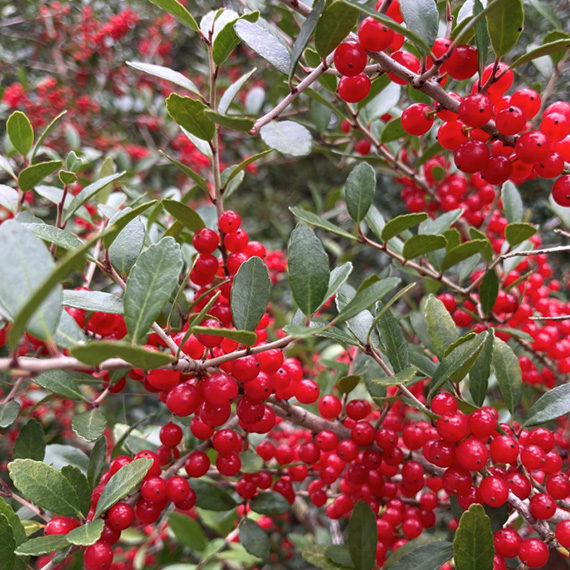
As December settles over Palmetto Bluff, it brings softer light, cooler mornings, and the natural beauty of native evergreens and winter berries that define the Lowcountry landscape. Palmetto Bluff Conservancy’s Education and Outreach Manager, Aaron Palmier...
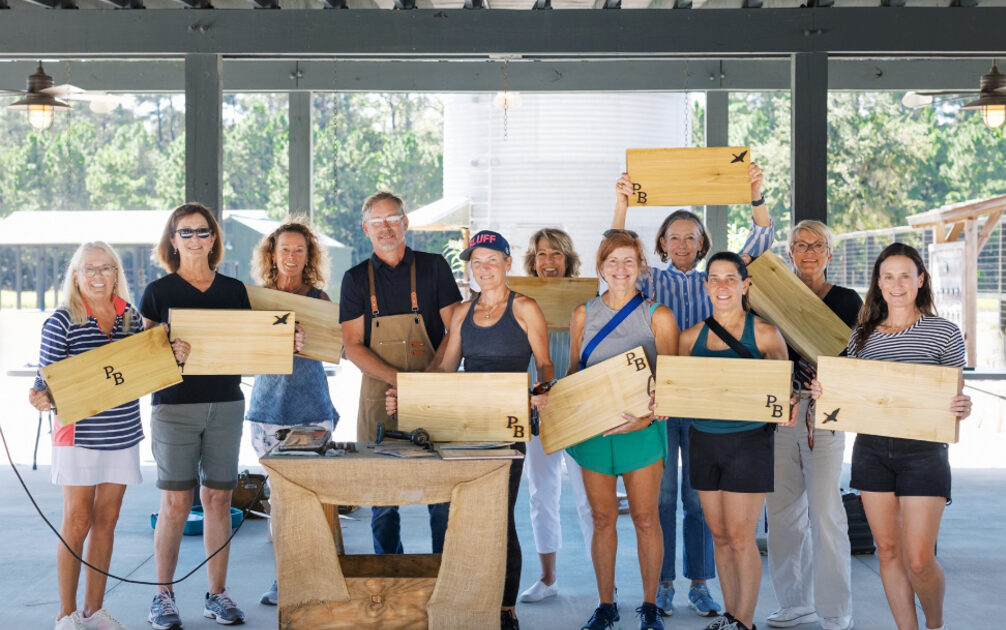
In 2025, Palmetto Bluff welcomed new neighbors and old friends, groundbreakings, and long-awaited openings. From inspired Club gatherings and elevated programming to the creation of our latest golf course, the year was defined by connection and excitement for ...
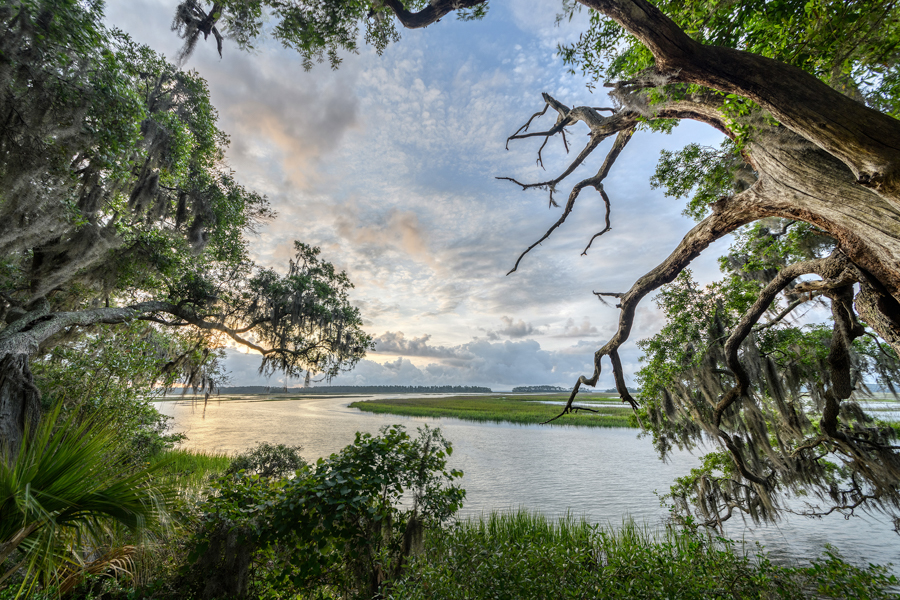
There is something serene about waking up to shimmering water, the stillness of the woods, or the sweep of marsh and sky right outside your window. Even without stepping outside, science shows that simply seeing nature from home can meaningfully improve mental...
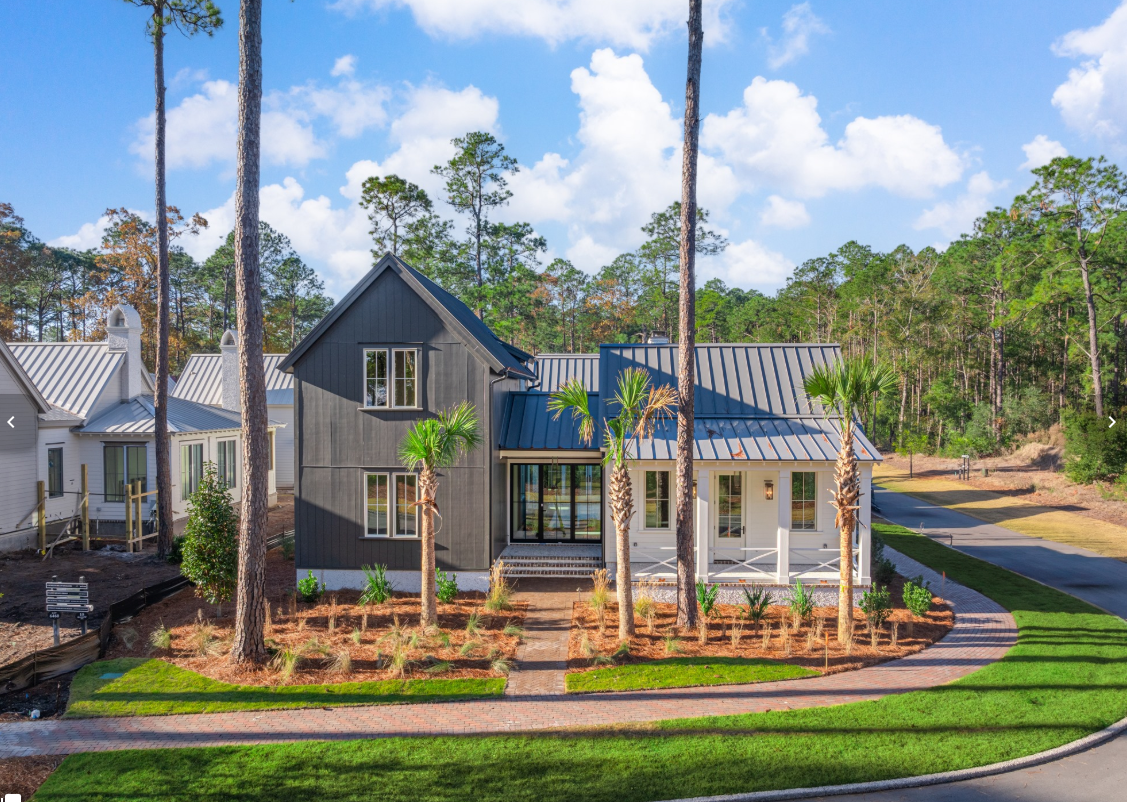
The Ultimate Choice: Building vs Buying a Home in Palmetto Bluff For those searching for Palmetto Bluff homes for sale, this common question often arises: Should you choose an existing residence, or embrace the opportunity to build your own? While a complet...

A Complete Guide to South Carolina Winter at Palmetto Bluff South Carolina's winter is unlike any other on the East Coast. While many travelers search for “South Carolina winter” expecting cooler temperatures and limited outdoor options, the Lowcountry revea...
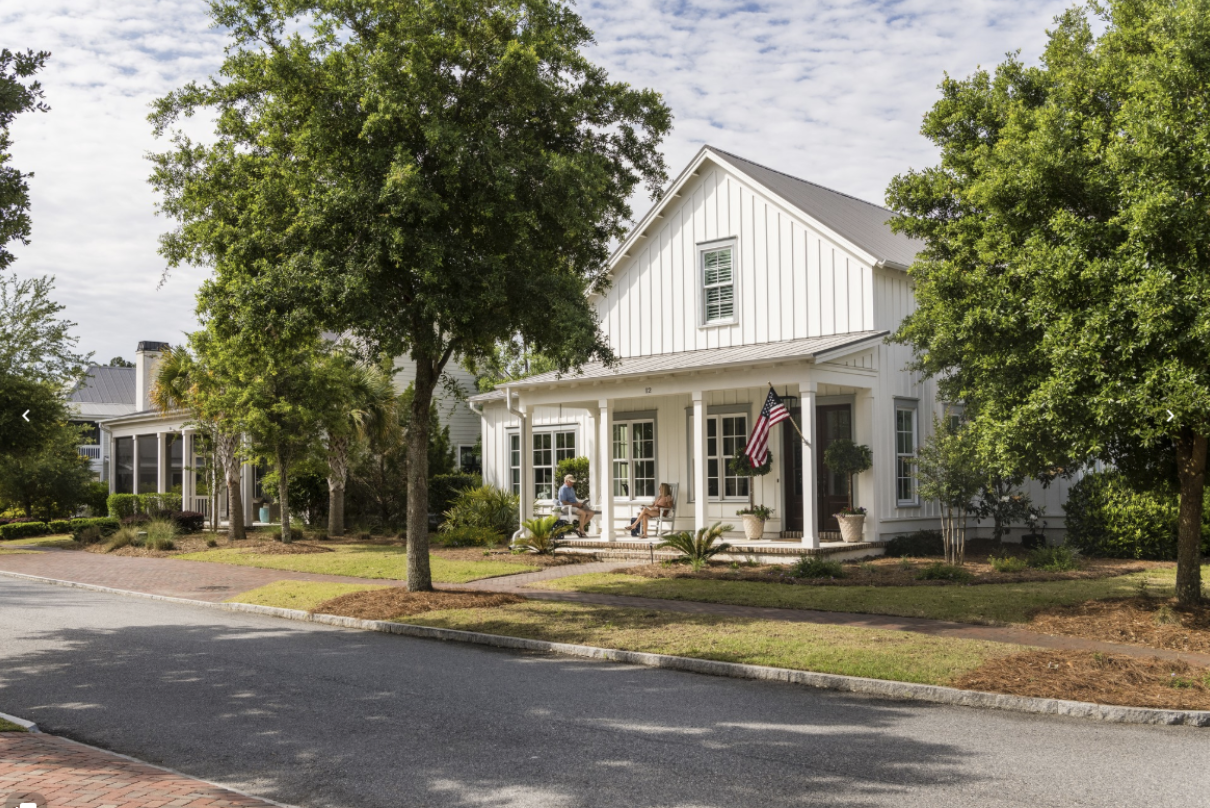
River Road: Where Lowcountry Beauty Meets Elevated Everyday Living Tucked gracefully between Wilson Village and Moreland Village, River Road is one of Palmetto Bluff’s most immersive communities. It's where the pace of life seems to soften, classic Southern ...
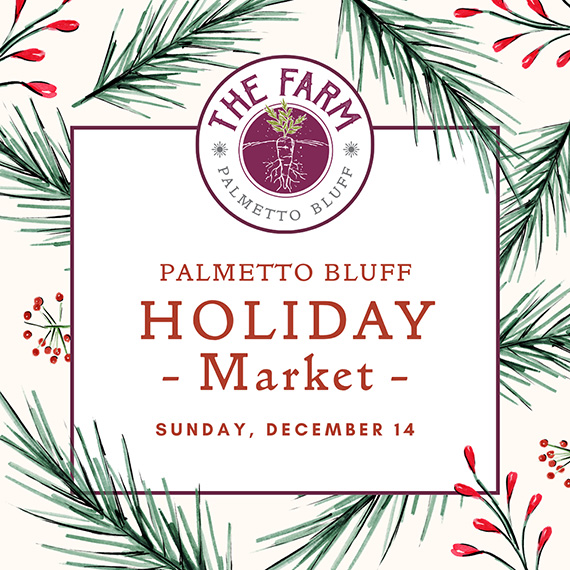
Sunday, December 14 | 9am to 1pmVillage GreenThe season’s most festive farmers market, the Holiday Farmers Market, comes to Wilson Village on Sunday, December 14, from 9am to 1pm. All are welcome to visit and experience the magic of holidays at the Bluff. The ...

Tucked amid whispering pines and overlooking a tranquil water trail, 11 Lyonia Street is where Lowcountry charm meets modern artistry. The newly built residence redefines Southern living with a balance of craftsmanship and calm. This is a home that feels both ...
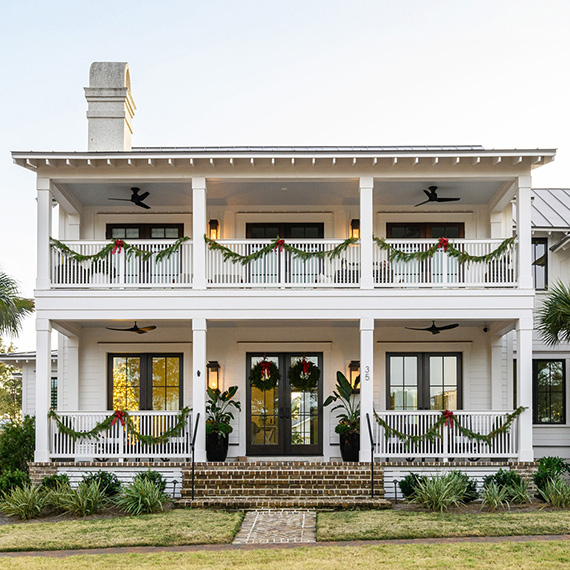
The holiday season in the Lowcountry brings crisp air, oaks draped in twinkling lights, and laughter drifting from homes where families and friends gather once again. At Palmetto Bluff, the holidays are more than just a season; they’re a feeling of togethernes...
Learn about the Palmetto Bluff Conservancy and how we keep the vision of our land in place.
On land or water, there is an ever-evolving variety of activities.
We do not attempt to independently verify the currency, completeness, accuracy or authenticity of the data contained herein. All area measurements and calculations are approximate and should be independently verified. Data may be subject to transcription and transmission errors. Accordingly, the data is provided on an “as is” “as available” basis only and may not reflect all real estate activity in the market”. © [2023] REsides, Inc. All rights reserved. Certain information contained herein is derived from information, which is the licensed property of, and copyrighted by, REsides, Inc.